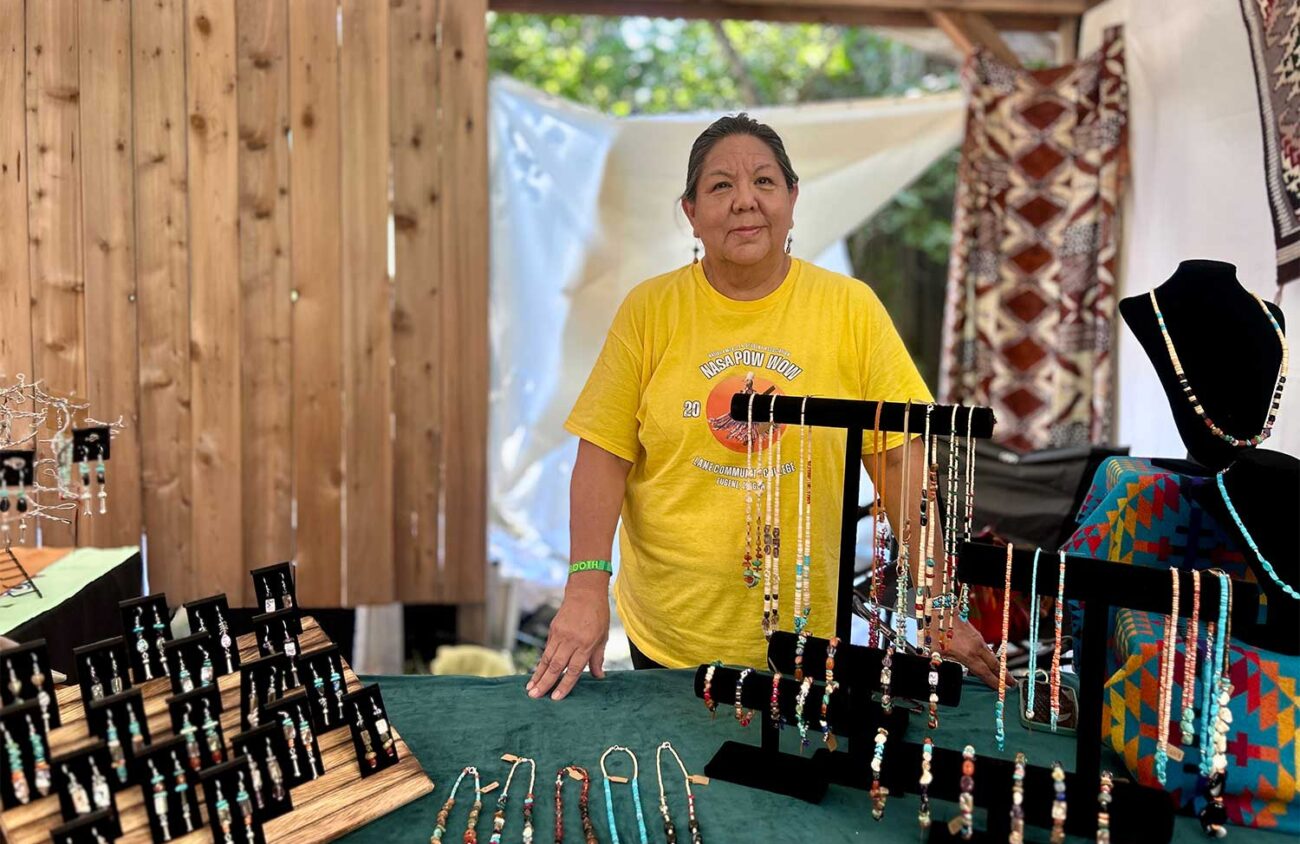By Ruby Duncan and Eve Weston
In years past, the Oregon Country Fair has dealt with allegations of cultural appropriation from Native American community members. The Ritz Sauna, an independent business operating at OCF, has borne some of the brunt of the criticism, from the “story pole” controversy to concerns Native American-appearing art painted on its walls was not painted by Indigenous artists.
In 2017, Fair organizers pulled the plug on the controversial totem pole known as the story pole, from the outside of the Ritz sauna and showers space. The pole was created by a non-Native artist and its presence sparked outcry from the Native community
Since then, Native American fairgoers have said that OCF is improving its inclusion and incorporation of Native artists and spaces.
Fair is on native Kalapuyan land, and the OCF website says, “We acknowledge that we are on occupied lands, and express our respect for Kalapuya and all Tribal Nations of Oregon, and the important contributions they continue to make to their communities, including to the stewardship of this watershed.”
When asked about conflicts regarding Native inclusivity, OCF Marketing Manager Vanessa Roy declined comment. However, Roy said that Fair “provides a very welcoming and safe space,” and “We accept everybody for who they are.”
In 2024, OCF introduced its Native Arts and Crafts Market in an effort to increase inclusion and representation of Native peoples at the Fair. NACM includes seven different booths with varying styles of art, including beadwork, paintings and wood work.
“They kind of went out of the way to help us do whatever we needed,” says Leo White Horse, a Lakota artist who sold his paintings and other artwork at the Fair for his third year.
Some of the vendors in this section have been selling at the Fair for years, but now, they say they are pleased to have an area where they can turn to other Native people. Arusha Dittmer, a mixed media artist who sells her work at Fair, says, “I’m super happy with it, and you know, I’m just excited to see just how it expands as it gets more popular.”
Artist Marcy Middleton was central to the creation of the NACM, making it known to Fair organizers that such an area was needed. Middleton says the comments and stereotypes from non-Native people that Native artists were experiencing at Fair led to a need for support from one another. “When we’re together, we support each other. It’s a feeling of, ‘OK, we have each other’s backs,’” Middleton says.
While many artists now feel Fair has done a great job in evolving and becoming a welcoming space for everyone, Middleton explains past claims of inclusivity at Fair have often been intertwined with privilege. She says that the OCF’s idea of inclusivity may not take into account everyone’s individual experiences.
“People think it’s the Fair that’s doing this [Native inclusion],” Middleton says, “but we’ve always been here and we know how to make opportunities for ourselves.”
According to the Ritz, a Native Tlingit artist was commissioned to contribute his artwork in an effort to address the concerns over cultural appropriation.
“For decades we have been heavily inspired by both flamingoes and the Northwest Coast Native traditions of storytelling, form, line and style,” the Ritz says in a statement to EW. “Since 2017, new installations of Northwest Coast style have been designed and created by Native-American artist Pattrick Price (aka “Teak”), born and raised in southeastern Alaska and current Eugene resident. Eugene Weekly reached out to Price but did not receive a response in time for publication.
Native American artist Lin Long says, “The Ritz has gone out of their way to hear any complaints and they’ve taken some of the offensive stuff down right away.”
In its statement, the Ritz writes, “For 2025, Teak created two new pieces inside the Ritz, one depicting spawning Coho salmon and the other representing a beaver. We also have several other new art installations this year in non-Native art styles.”
Eugene Weekly reporters sought to confirm in-person at Fair if all the Native-style artwork inside the Ritz is attributed to Native artists, as some members of the Native American community had expressed concerns. However, the reporters were prohibited from entering the Ritz.
Mike Meyer, one of the volunteers for OCF who accompanies media, said reporters could not enter the Ritz because “it’s just not OK to probe into this area,” and that “we have to guard the sanctity of the Ritz.” On July 5, a man was arrested at the Fair for allegedly filming people showering and changing in the Ritz, according to The Oregonian.
